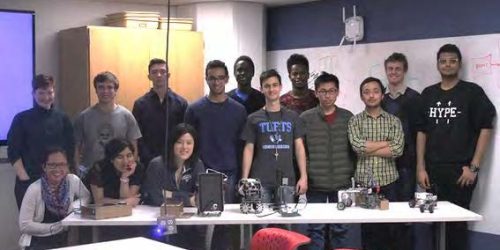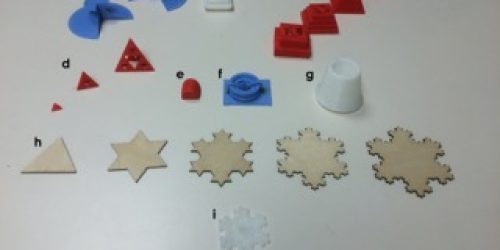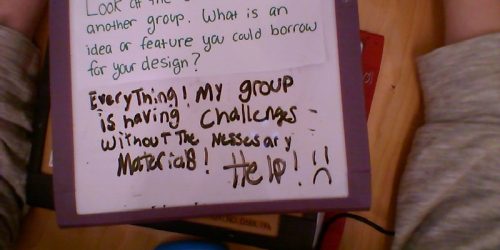With an intention of designing hands-on mathematical learning experiences, Khushbu Kshirsagar, a graduate student of the Tufts Center for Engineering Education and Outreach (CEEO), designed Zine Machine – A tinkering kit involving math and making.
Under the guidance of Tufts faculty member Kristen Wendell, Khushbu created Zine Machine (Zine Machine), a paper-based mathematical tinkering kit that uses two-dimensional mechanical movements to enable physical sense-making about mathematical functions. Zine Machine presents automata, moving mechanical devices, in the format of a zine that sets a narrative between math and motion. Zines are made by folding paper into the form of a pocket-sized story-telling magazine. With Zine Machine, learners can represent the mathematical concepts of functions, inputs, and outputs embodied in mechanical movements. The goal is to tinker with the arrangements of the machine pieces provided in the zine to drive one or more outputs using a fixed input. The zine provides instruction as a folded booklet and opens up to a flat sheet to serve as the maker canvas.
Inspired by the various automata tinkering kits designed by science museums, and the four big ideas in mathematics – connectedness, multiple perspectives, recurring basic ideas, and longitudinal coherence, Zine Machine offers a playful and idiosyncratic lens to math.
Figure. Zine Machine (page-wise)
Mathematics being a composition of multiple but interrelated and interdependent concepts and systems, could potentially use a more coherent, connected and hands-on approach, which can be applied beyond the math classroom. Zine Machine, therefore, took a deliberate consideration of addressing algebraic mathematical concepts in a tangible form.
The primary objective of designing the Zine Machine was (1) to design an accessible, inviting and interactive math manipulative that targets algebra-based concepts, and (2) to use elements such as simple mechanical motion and storytelling to enhance the experience of mathematical engagement and learning. The Zine Machine tinkering kit comes with laser cut pieces fastened onto the zine with colorful brass brads; the kit is equipped with machine elements that include circles, squares, physical slots, links of different lengths and a link with a slot. The learners use these pieces to create their “functions” which in turn drives the output’s movements. The zine format provides two sides of usability where one side contains the text and narratives for the learners to follow while tinkering with the kit, and the other side of the paper serves as the maker canvas. The maker canvas is the side where the learners build their own creations. Zine Machine provides the learners an ability to visually map the two-dimensional movements of the elements from a fixed rotational input motion to their uniquely designed output motion(s).
Figure. Zine Machine elements/machine pieces
For the purposes of conducting research on informal learning settings, the research and development of Zine Machines was specifically carried out with a target group that comprised a universal age range. The user study consisted of nine participants ranging from 6 years old to 27 years old in age. The users spent about forty-five minutes on average interacting with the Zine Machine kit, strongly demonstrating mathematical and mechanistic fluency, positive feedback based on the usability and affordances of the tinkering kit, and expressing positive affirmations towards user interaction and engagement with the kit.
Figure. User examples



